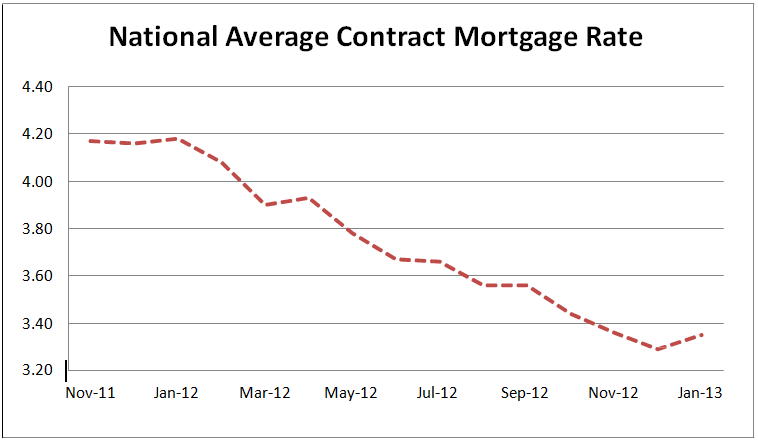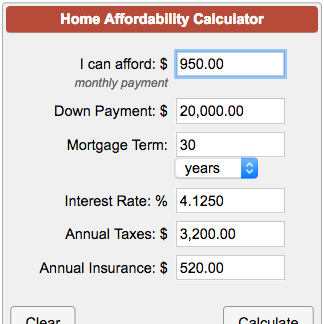NCUSIF retained a strong balance of $1. 23 per $100 in insured deposits versus a negative $0. 39 per $100 in insured deposits at the FDIC. Thus, through the Distressed Possession Relief Program (TARPAULIN), the federal government supplied emergency loans amounting to $236 billion to 710 banksor 1. 93% of all bank properties.
008% of cooperative credit union possessions. While there are many factors cooperative credit union didn't engage in the exact same kind of subprime lending as mortgage companies and banks, credit unions' special structure is the main factor. As not-for-profit, member-owned entities, credit unions have significantly fewer incentives to look for short-term earnings and perks that plainly aren't in their members' finest interests.
Increasing house rates, falling home mortgage rates, and more efficient refinancing tempted masses of homeowners to refinance their houses and extract equity at the very same time, increasing systemic danger in the monetary system. Three patterns in https://www.mydailyrecord.com/classifieds/wesley+financial+group+llc+timeshare+cancellation+experts+over+50000000+in+timeshare+debt+and+fees+cancelled+in,78825 the U.S. real estate market integrated to significantly amplify the losses of house owners in between 2006 and 2008 and to increase the systemic threat in the monetary system.

But together, they tempted masses of property owners to refinance their houses and extract equity at the exact same time (" cash-out" refinancing), increasing the threat in the financial system, according to,, and. Like a ratchet tool that might just adjust in one instructions as home rates were rising, the system was unforgiving when prices fell.
What Does Recast Mean For Mortgages Things To Know Before You Get This
$115362), these researchers approximate that this refinancing ratchet result might have generated possible losses of $1. 5 trillion for home mortgage loan providers from June 2006 to December 2008; more than five times the potential losses had house owners avoided all those cash-out refinancing offers. Over the previous twenty years, the growth and increasing efficiency of the refinancing company have made it easier for Americans to benefit from falling interest rates and/or increasing home worths.
These authors focus on https://omaha.com/business/consumer/wesley-financial-group-diversifies-with-launch-of-wesley-mutual/article_1cf167bd-44c0-535b-ab57-13075882968f.html the previously unstudied interplay of this development in refinancing with falling rate of interest and rising house values. Benign in seclusion, the three patterns can have explosive outcomes when they occur all at once. We show that refinancing-facilitated home-equity extractions alone can account for the remarkable increase in systemic danger positioned by the U.S.
Utilizing a design of the home loan market, this research study finds that had actually there been no cash-out refinancing, the overall worth of home loans exceptional by December 2008 would have reached $4,105 billion on realty worth $10,154 billion for an aggregate loan-to-value ratio of about 40 percent. With cash-out refinancing, loans swelled to $12,018 billion on residential or commercial property worth $16,570 for a loan-to-value ratio of 72 percent.
Initially, frequent cash-out refinancing changed the normal mix of mortgage-holders and developed an unintended synchronization of property owner take advantage of and mortgage period, triggering associated defaults when the issue hit. Second, once a home is bought, the financial obligation can't be incrementally minimized due to the fact that property owners can't offer off parts of their house-- houses are indivisible and the property owner is the sole equity holder in your house.
The Of Hedge Funds Who Buy Residential Mortgages
With house values falling from the peak of the marketplace in June 2006, the research study's simulation recommends that some 18 percent of houses remained in negative-equity area by December 2008. Without cash-out refinancing, that figure would have been only 3 percent. The most insidious aspect of this phenomenon is its origin in 3 benign market conditions, each of which is generally considered a harbinger of economic development, the authors write. what happened to cashcall mortgage's no closing cost mortgages.
Although it is the quality and compound of regulation that has to be the center of any dispute concerning regulation's role in the financial crisis, a direct step of guideline is the financial dollars and staffing levels of the financial regulative firms. how much is mortgage tax in nyc for mortgages over 500000:oo. In a Mercatus Center study, Veronique de Rugy and Melinda Warren found that expenses for banking and financial regulation increased from only $190 million in 1960 to $1.

3 billion in 2008 (in constant 2000 dollars). Focusing specifically on the Securities and Exchange Commission the firm at the center of Wall Street guideline budget outlays under President George W. Bush increased in genuine terms by more than 76 percent, from $357 million to $629 million (2000 dollars). Nevertheless, spending plan dollars alone do not constantly translate into more cops on the beat all those extra dollars might have been invested in the SEC's elegant new head office building.
The SEC's 2008 staffing levels are more than eight times that of the Consumer Item Safety Commission, for instance, which evaluates countless consumer products annually. Comparable figures for bank regulatory agencies show a small decrease from 13,310 in 2000 to 12,190 in 2008, although this is driven completely by decreases in staff at the regional Federal Reserve Banks, resulting from modifications in their checkclearing activities (primarily now done digitally) and at the FDIC, as its resolution personnel dealing with the bank failures of the 1990s was wound down.
What Are The Percentages Next To Mortgages for Beginners
Another procedure of policy is the absolute number of rules released by a department or firm. The main monetary regulator, the Department of the Treasury, which includes both the Office of the Comptroller of the Currency and the Office of Thrift Supervision, saw its annual average of new guidelines proposed boost from around 400 in the 1990s to more than 500 in the 2000s.
Reserving whether bank and securities regulators were doing their jobs aggressively or not, one thing is clear recent years have witnessed an increasing variety of regulators on the beat and an increasing number of guidelines. Central to any claim that deregulation triggered the crisis is the GrammLeachBliley Act. The core of GrammLeachBliley is a repeal of the New Dealera GlassSteagall Act's restriction on the blending of financial investment and industrial banking.
They frequently also have big trading operations where they buy and offer financial securities both on behalf of their clients and on their own account. Commercial banks accept guaranteed deposits and make loans to households and businesses. The deregulation review posits that when Congress cleared the method for investment and industrial banks to merge, the financial investment banks were provided the reward to take higher risks, while minimizing the quantity of equity they are needed to hold against any given dollar of assets.
Even before its passage, financial investment banks were already permitted to trade and hold the really monetary possessions at the center of the monetary crisis: mortgagebacked securities, derivatives, creditdefault swaps, collateralized financial obligation responsibilities. The shift of investment banks into holding considerable trading portfolios resulted from their increased capital base as a result of many investment banks becoming publicly held business, a structure allowed under GlassSteagall.